Physical Address
304 North Cardinal St.
Dorchester Center, MA 02124
Knowledge of spinal cord neuroanatomy is integral to the understanding, diagnosis, and management of spinal cord disorders. The spinal cord syndrome depends on site, process, and extent of spinal cord damage. A myelopathy is defined as any disorder that impairs spinal cord function. Myelopathies will be presented in the next chapter.
The spinal cord has major functional importance, despite representing only 2% of the entire central nervous system volume. The spinal cord is a cylindrical elongated structure flattened dorsoventrally, having a length of 42–45 cm ( Fig. 54.1 ). It lies within the vertebral canal extending from the atlas, continuous with the medulla through the foramen magnum, to the level of the first and second lumbar vertebra. Here it tapers into the conus medullaris and terminates as the cauda equina (see Fig. 54.1 ). The spinal canal dimensions are slightly larger, allowing the cord to move freely within the canal during neck and back flexion/extension as its perspective changes with movement. When performing a lumbar puncture, the spinal needle can be inserted safely below the L3 vertebra, which is well below spinal cord termination.
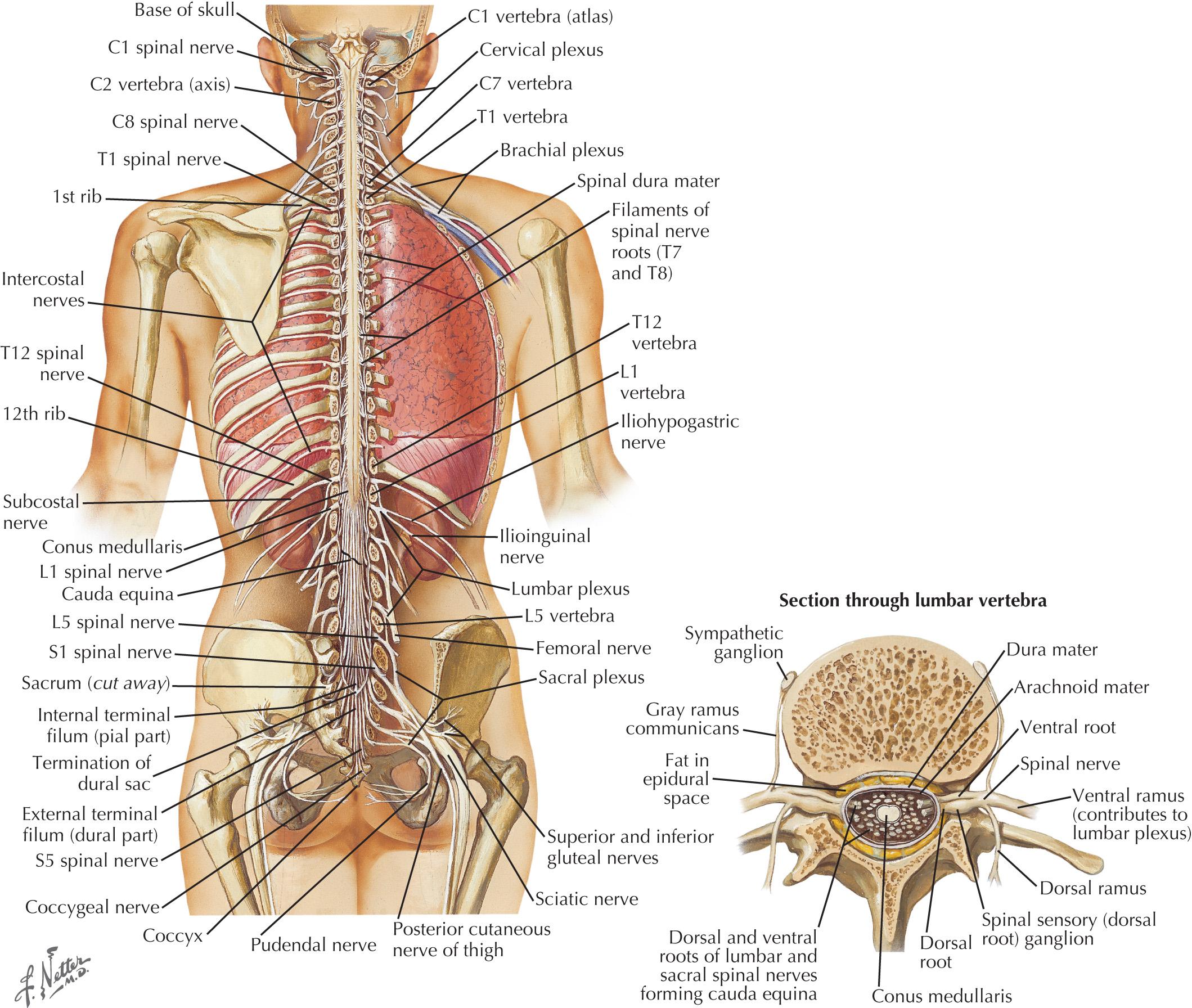
The cervical and lumbar enlargements of the spinal cord provide the nerve roots innervating, respectively, the upper and lower limbs. There are 31 pairs of spinal nerves, each having dorsal sensory and ventral motor roots that exit the cord (8 cervical, 12 thoracic, 5 lumbar, 5 sacral, and 1 coccygeal). Although there are 7 cervical vertebrae, there are 8 cervical nerve roots ( Fig. 54.2 ). The C1–C7 roots exit above their respective vertebrae whereas C8 exits below the seventh cervical vertebra and all thoracic, lumbar, and sacral roots exit below their specific vertebrae.
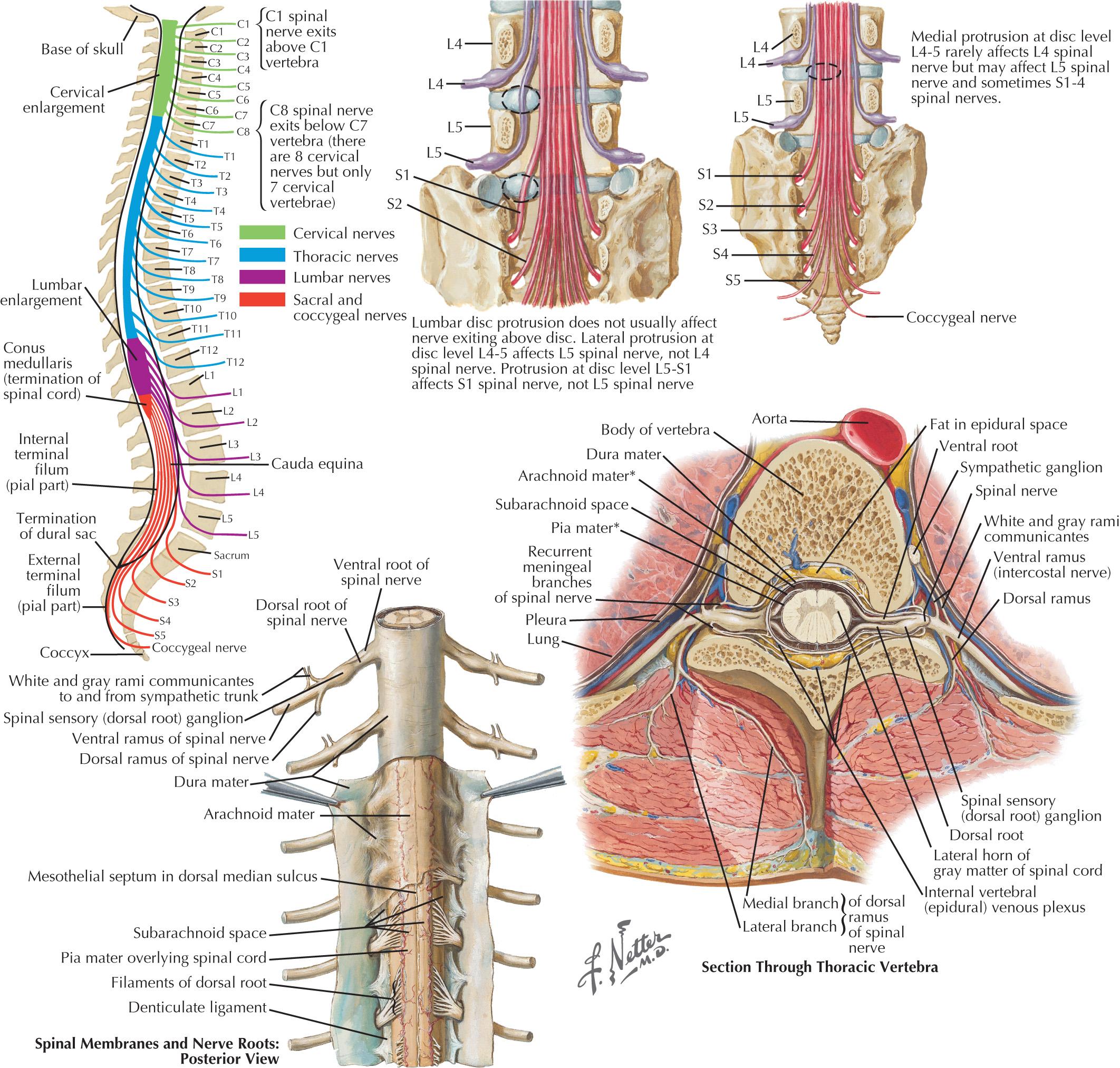
Three protective membranes, the meninges including the dura mater, being the outer layer; then the arachnoid; and the most inner one, the pia, surround the cord (see Fig. 54.2 ). Cerebrospinal fluid flows between the arachnoid and pia. Epidural fat is present in the epidural space between the spinal canal and dura mater. When clinical myelopathies develop, these various disorders are classically categorized as intramedullary, that is, intrinsic to the cord; or extramedullary, occurring secondary to disorders extrinsic to the cord. Extramedullary disorders are further subdivided into those with either an intradural extramedullary locus or a purely extradural site of pathology.
White matter, consisting of myelinated fibers, surrounds the butterfly or H -shaped gray matter that contains cell bodies and their processes within the cord's center. These include both primary ascending sensory fibers and descending motor fibers. The sensory pathways are most superficial, while the motor fibers such as the corticospinal fibers are more deeply situated but still superficial and superior to the ventral horn containing the anterior horn cells that are the primary receptors for the corticospinal tract fibers. Longitudinal furrows on the cord's surface divide the white matter into columns or funiculi that are large bundles of nerve fibers having diverse functions. The anterior median fissure, posterior median, posterior intermediate, and the anterolateral sulci divide the dorsal or posterior, lateral, and anterior columns. The posterior columns are further divided into two fasciculi: gracilis medially (present at all spinal levels) and cuneatus laterally (T6 and above).
Ascending and descending tracts within the cord are interrupted at sites of cord damage ( Figs. 54.3–54.5 ). The subsequent clinical sequelae develop based on the specific tracts that are affected.
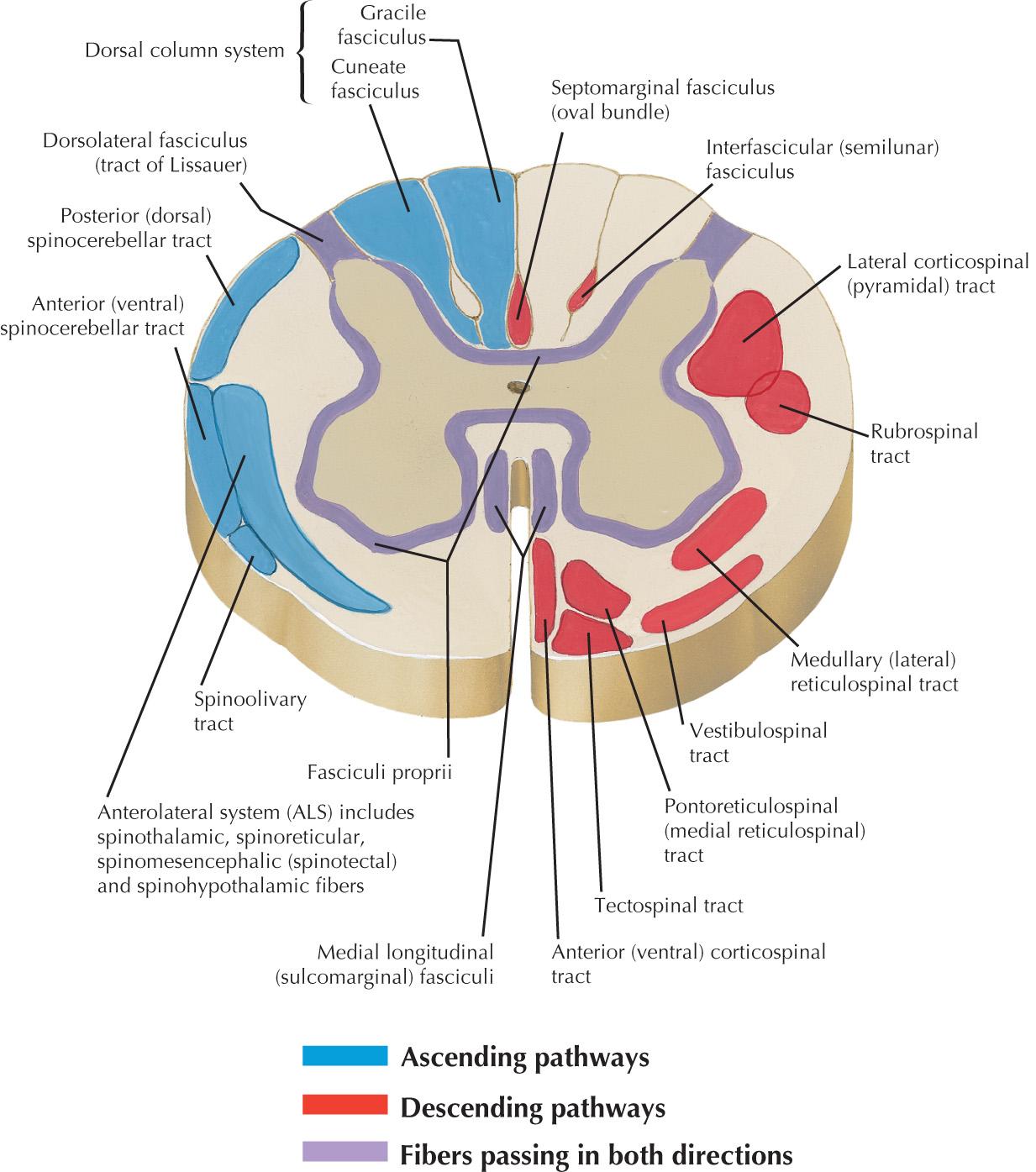
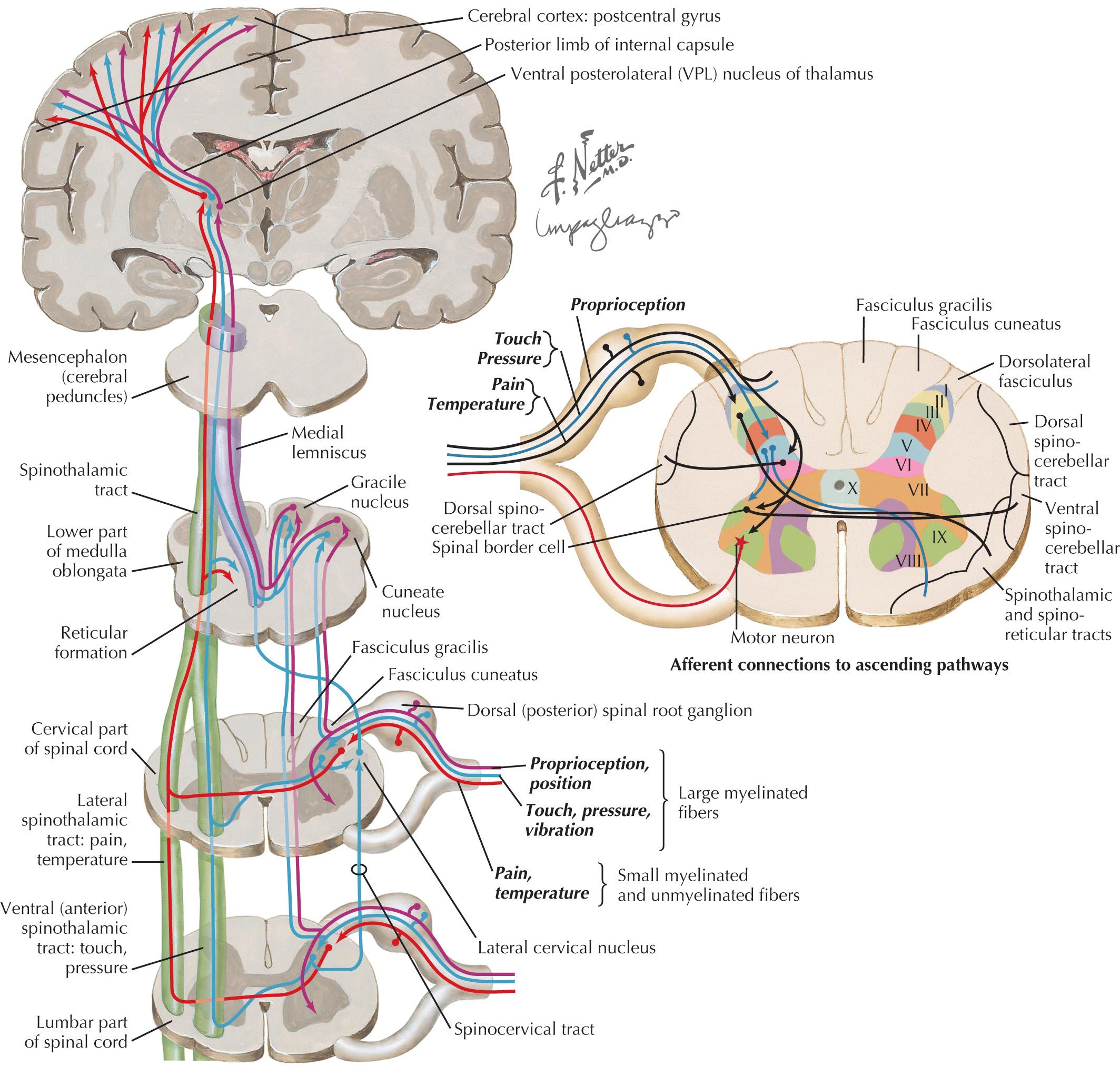
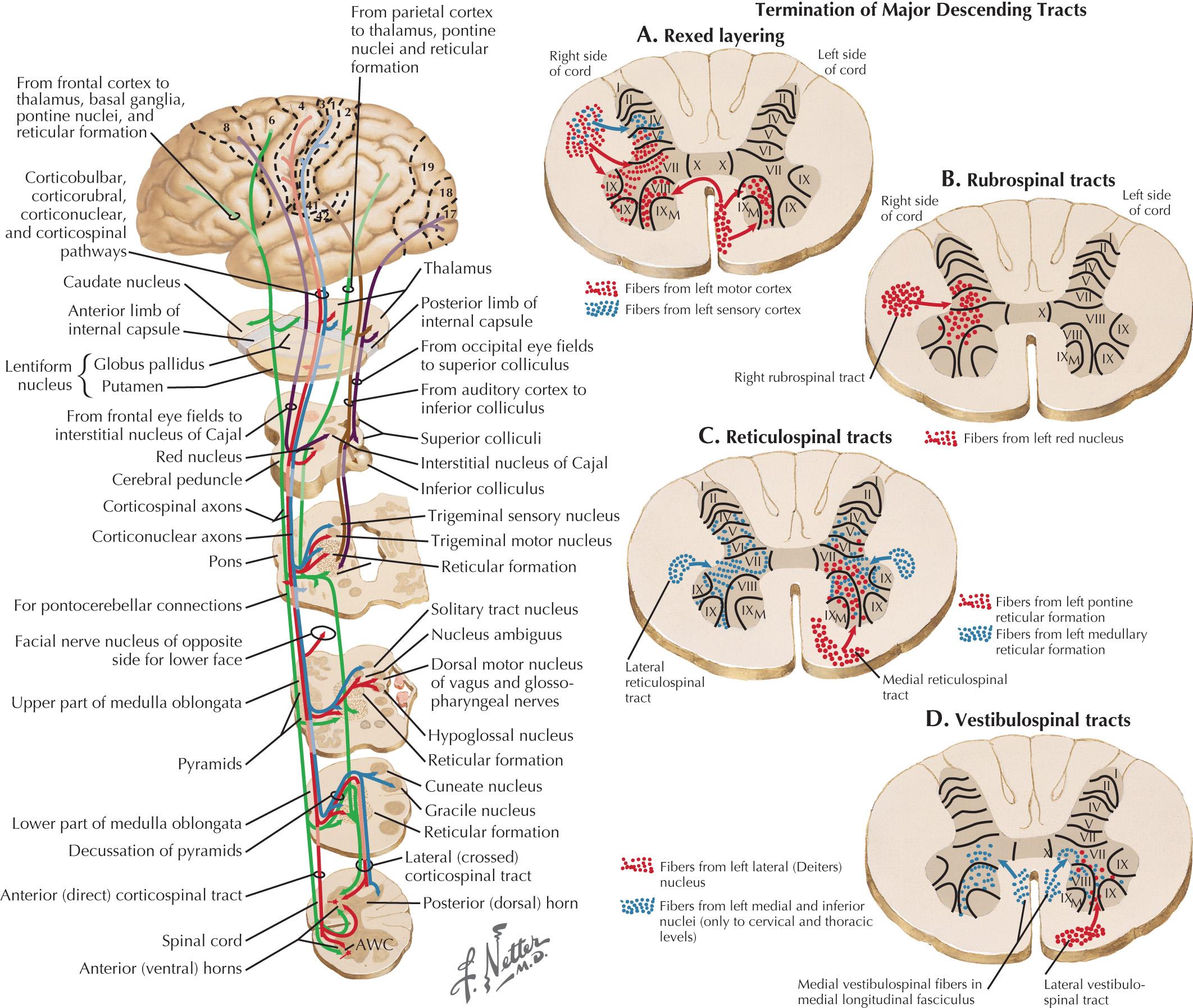
Become a Clinical Tree membership for Full access and enjoy Unlimited articles
If you are a member. Log in here